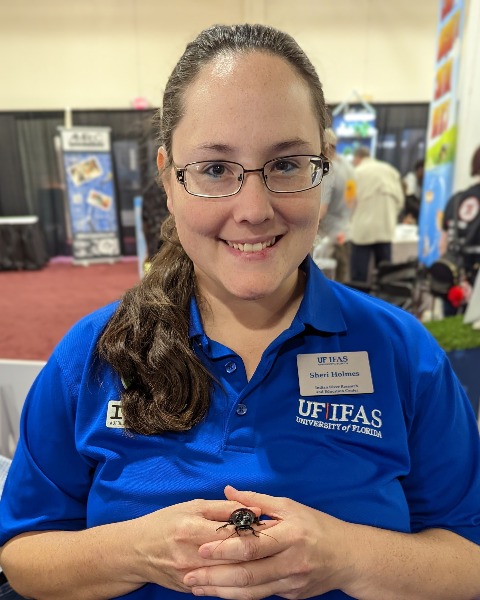Student 10-Minute Presentation
Plant-Insect Ecosystems
Student
Student Competition
Oviposition preference of monarch butterflies (Danaus plexippus) on exotic of milkweeds in South Florida

Sheri L. Holmes
Master's student
University of Florida
Port St Lucie, Florida- CM
Carey Minteer
Assistant Professor
University of Florida
Fort Pierce, Florida 
Adam Dale
Associate Professor
University of Florida
Gainesville, Florida- JD
Jaret C. Daniels, Ph.D.
Professor and Curator
University of Florida
Gainesville, Florida
Presenting Author(s)
Co-Author(s)
Renowned for its orange and black markings, the monarch butterfly (Danaus plexippus L.) (Lepidoptera: Nymphalidae) is regarded as an emblem of conservation efforts. The alarming decline in migratory populations has prompted proactive responses, including citizen science initiatives and the cultivation of nonnative host plants by dedicated gardeners in Florida. Among these species are tropical milkweed (Asclepias curassavica L.), giant milkweed (Calotropis gigantea L.), and balloon milkweed (Gomphocarpus physocarpus E. Mey). While these species can serve as alternative food sources for monarch larvae, their chemistry and nutrient profile may not offer the same level of suitability as native milkweed species such as swamp milkweed (Asclepias incarnata L.). It is challenging to predict with certainty how these exotic milkweed species will affect egg-laying preferences. To address this, we conducted an experiment to evaluate female oviposition preferences among tropical milkweed, swamp milkweed, giant milkweed, and balloon milkweed. Recently mated females were placed in eight outdoor screenhouse arenas and given four days to choose where to lay their eggs. Egg counts and plant measurements were conducted daily. Our findings revealed a significant preference for A. incarnata and A. curassavica, with oviposition rates being lowest for G. physocarpus. These results provide critical insights for gardening practices and conservation strategies, guiding plant selection to support monarch populations effectively.

.png)

